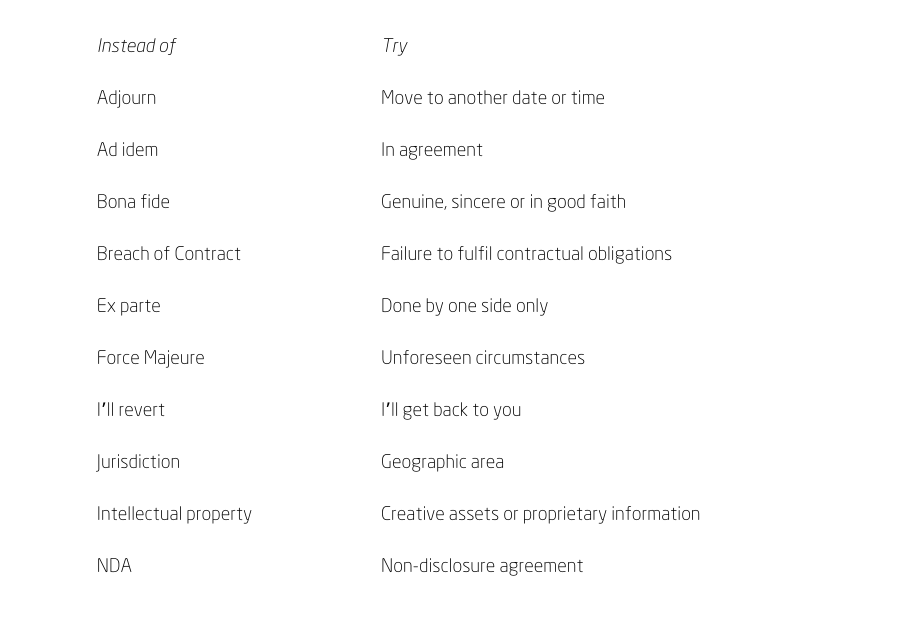Excellent interdepartmental communication effectively enhances every part of an organisation. When diverse teams understand each other’s outlooks, they can collaborate seamlessly to achieve the company’s goals. Further, when legal and commercial teams communicate effectively, risk is minimised, productivity soars, and the company’s overall well-being benefits.
Conversely, blurred communication lines can lead to misunderstandings, delays, and friction, jeopardising outcomes. Disconnection between legal and commercial teams can result in non-compliance, lawsuits and tarnish the business’s brand reputation. Thus, bridging this communication gap is of paramount importance.
The great divide
Let’s begin by examining the factors that contribute to the divide between legal and other internal business functions. Legal professionals possess specialised knowledge, acronyms, and legal terminology that can often seem like a foreign language to those unfamiliar with the field. Traditionally, their thinking is structured and analytical, aligning with laws and regulations.
Similarly, marketing, finance, sales, or IT professionals have their own distinct jargon, acronyms, and processes. They may engage in creative thinking outside conventional boundaries or possess a strong focus on business growth and commercial orientation. While their understanding of legal concepts may be limited and derived from popular media, they are not expected to possess in-depth knowledge—leaving that responsibility to the legal team. However, this barrier of comprehension can hinder effective communication, which in turn affects smooth business operations.
Unravelling legal terminology
Legal language can be daunting to those outside the legal profession. Commercial teams can learn to navigate this linguistic maze. With some effort, simplified legal vocabulary can be curated, stripped of unnecessary intricacies, and made accessible to all.
Legal teams can help by reducing their use of legalese. Being conscious of their audience, they can explain in plain language to allow others to understand. This way, legal advice becomes practical, making it easier for commercial teams to follow and implement.
Some examples of replacing legal terminology with business-appropriate language are:

Enlightening legal teams
Just as legal teams need to ditch the jargon, commercial teams must endeavour to include legal colleagues in their business discussions. By doing this, they welcome the legal team into their sphere, offering a glimpse into their daily challenges, decisions, and dilemmas.
In turn, the legal team will be better able to grasp the overall business operation, offering advice that is not only legally robust but also commercially astute. Remember, legal advice lacking business understanding can lead to impractical solutions and, in the end, cost the business money.
Streamlined communication channels
Emails, meetings, and chat platforms have merits, but these can help or hinder communication. Organisations can invest in one centralised platform, accessible to all, establishing a streamlined communication channel to bridge the gap between legal and commercial teams.
Creating this centralised communication hub allows all team members to share, discuss, and review information efficiently. Remember, the tool is only as effective as its user. Encourage your teams to embrace this platform to reap the benefits of improved collaboration.
Open communication channels
Two-way dialogue is a critical component of effective communication. Commercial teams need to feel confident in asking questions or seeking clarifications from their legal colleagues. Similarly, legal teams should be open to approaching commercial teams to further understand requests and future needs better. Both should welcome feedback regarding their communication style and the provision of information.
Remember, feedback isn’t criticism. It’s a tool for growth and improvement. Encourage a culture where feedback is seen as a positive, necessary element for continuous learning and development.
Empowering through education
Regular training sessions can play a significant role in bridging the gap between legal and commercial teams. These could include workshops where legal teams explain basic legal principles or sessions where commercial teams present their workflows and business models. This increases the understanding between teams and can lead to shared efficiencies.
Investing in training enriches your teams’ knowledge base and fosters mutual respect and understanding. By learning about each other’s work, legal and commercial teams can better appreciate the challenges and pressures they each face.
Celebrating successes
Always celebrate your victories, no matter how small. Did your legal and commercial teams collaborate to pull off a successful project? Acknowledge both teams’ efforts and celebrate the achievement. This strengthens the bond between teams and reinforces the importance of effective communication.
A culture that values collaboration and shared successes will encourage team members to keep communication lines open and respectful, ensuring smooth operations for future projects.
Conclusion
Bridging the gap between legal and commercial teams is not a one-time task. It demands continuous effort, feedback, training, and improvement. As business landscapes evolve, so will the challenges these teams face.
By fostering a culture of open communication, mutual understanding, and shared victories, you can ensure that all teams will collaborate effectively, now and into the future.

